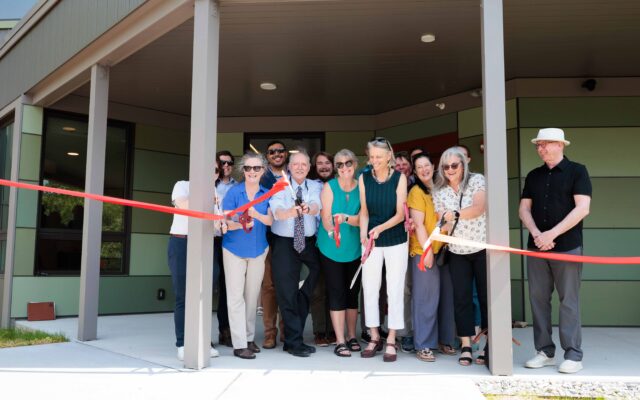The basic premise of Housing First is simple. If someone is experiencing chronic homelessness – meaning they are continuously homeless for a year or more or have had four or more episodes of homelessness in three years – they are provided housing first and then given the support they need to work on other issues they may have.
Before Housing First became an accepted and proven model, people would often receive housing only after they met certain thresholds, such as sobriety, employment, or treatment for mental illness.
According to Greg Payne, Development Officer at Avesta Housing based in Portland, Maine, housing was often used as “a carrot,” an incentive to get people to change behaviors. The “housing ready” model does work for some populations, but when survival is the primary goal, it’s tough to take care of the rest.
“What we’ve learned over time is that homelessness is too traumatic and difficult to expect that people can battle and overcome these other obstacles before getting housing,” said Payne. “Housing First works because the stability of a home makes the other life changes much more possible to achieve.”
Avesta has developed three affordable apartment buildings in Portland, Maine using the Housing First approach: Logan Place in 2005, Florence House in 2010, and Huston Commons in 2017. The key to success for these communities is to offer the 24-hour support and services that residents need to thrive, whether its treating addiction, opening a bank account, or learning new life skills. At all three properties, there is 24-hour on-site support, provided by Preble Street.
Partners for a common purpose, Avesta and Preble Street have had an ongoing partnership for more than twenty years. In the early 2000s, leaders at both organizations were frustrated by the high numbers in Portland’s homeless shelters – and concerned that some of those people kept bouncing from shelter to the emergency room to jail and back again. It was clear that they needed to try something different. Together they decided to open a property specifically targeting those who have the most struggles and are most difficult to house.
When Logan Place opened the doors to its 30 apartments on March 23, 2005, shelter numbers immediately went down 10% (and stayed down). Mark Swann, Preble Street’s Executive Director, knew the tenants who moved into Logan Place.
“I’d known most of them since 1991 when I started at Preble, and I’ve since watched their lives transform with the sanctity of a home,” he said. “Suddenly instead of encountering Geno on a park bench where he’s intoxicated at ten o’clock in the morning, I was in his apartment talking to him about the Red Sox and playing a game of cribbage.”
Huston Commons welcomed 30 more people who were previously experiencing chronic homelessness. Preble Street and Avesta again worked closely together. Avesta found a site to develop the property, following many conversations with Preble Street about what neighborhood would work best. Avesta managed planning and zoning, inviting Preble Street to participate at hearings or other meetings, when necessary. Avesta was also responsible for coordinating the financing (using LIHTC as the funding base) and building of the project itself.
Simultaneously, Preble Street worked on finding funding for their on-site social workers, which is, according to Payne, “the single biggest impediment” to developing properties like Huston Commons, due to a complete lack of an ongoing source for support services.
A third partner has played a critical role: the Portland Housing Authority provides project-based rental assistance for the tenants, who have little to no income.
“If we didn’t have the site-based section 8 vouchers, I don’t think any of this would work,” said Swann. “We’ve been blessed to have such a supportive partner in PHA.” With all the costs of building and staffing Housing First projects, housing people is still less expensive than allowing those same people to repeatedly cycle through public resources. Payne puts it succinctly: “It costs more to the public, and to the person.”




